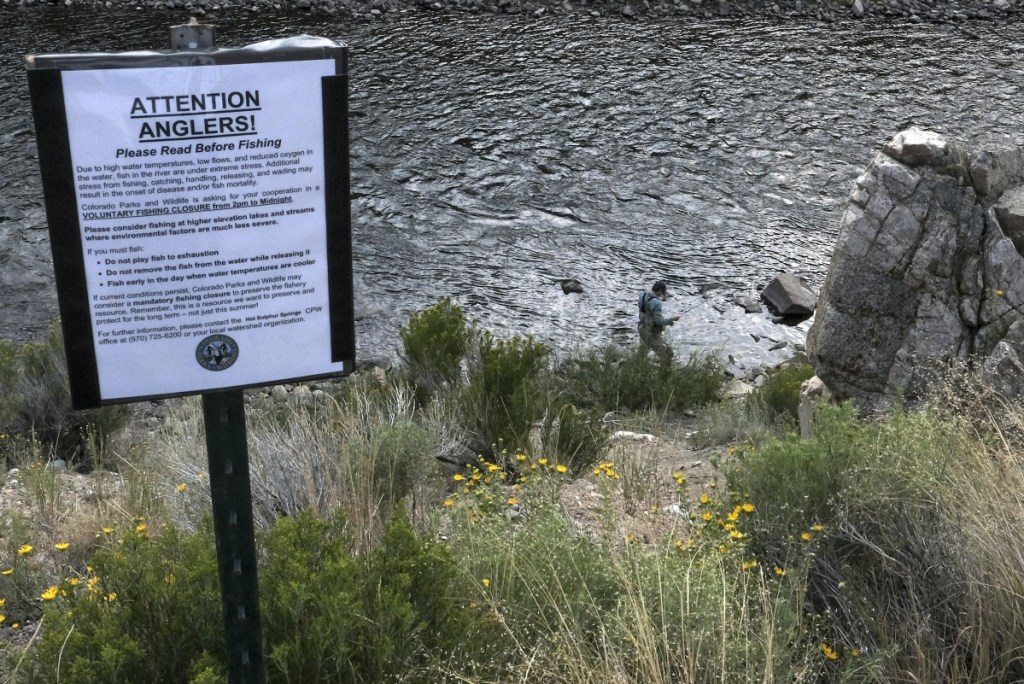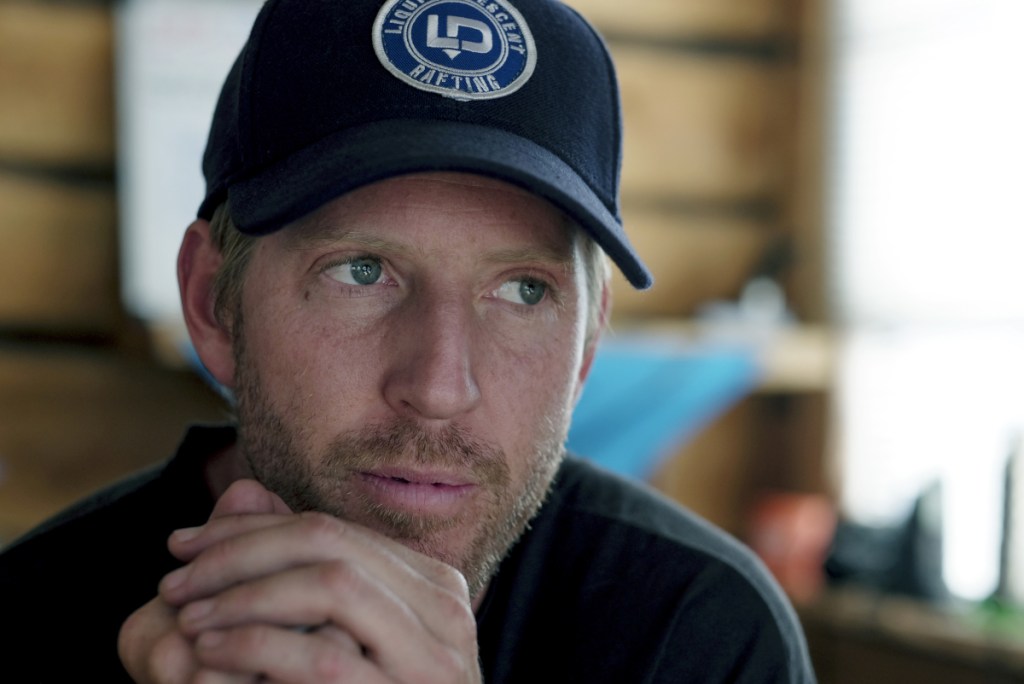KREMMLING, Colo. — In the state known as the “mother of rivers,” the third-warmest and driest period in more than a century is wreaking havoc on waterways that provide the economic lifeline for rural communities and high-alpine habitat for Colorado’s signature fish, the greenback cutthroat trout.
The extremes of temperature and precipitation – too much of one, too little of the other – have grounded rafting companies in places that usually offer white-knuckle rides. With water barely lapping over jagged rocks, some outfitters have moved operations to rivers fed by reservoirs higher up in the parched Rockies.
“Boats can get piled up and people can get hurt if they flip, and guides were having to use their backs to pull the rafts off of rocks,” said Alan Blado, owner of Liquid Descent Rafting, which is based about 40 miles west of downtown Denver. “We didn’t want them to get injured.”
Blado hung on there until his usual run, Clear Creek, was just too low. He relocated his school buses and bright blue rafts to the small Rocky Mountain town of Kremmling and now is trying to salvage the late season by persuading clients to drive the extra 72 miles to float a wide blue-green stretch of the Upper Colorado.
“With Clear Creek being cut short, everybody pretty much takes a pay cut,” Blado said.
This state boasts more headwaters than almost any in the country. Heart-stopping rapids, smooth tributaries and deep holes on the Colorado, Arkansas and the Animas rivers, among others, draw outdoors enthusiasts from around the world.
Last year, thanks to the winter’s heavy snows, outfitters served a record number of visitors. Conditions this year are far different – and far more in line with the pattern of recent decades. Since the late 1990s, three intense droughts have buffeted the state’s $193-million rafting industry.
Summer 2018 followed a rough winter in which some areas received 30 percent of what once was typical snowpack. A warm spring thawed drifts early, causing rivers to peak in May, weeks before the busy summer season. Severe to exceptional drought now covers two-thirds of Colorado, and some of the worst wildfires in state history have broken out.
“Not just in Colorado, but U.S. wide and globally, we’re seeing this disturbing warming trend that is amplifying over the last few decades going back to late 1960s,” said Brad Rippey, a meteorologist with the U.S. Department of Agriculture. “It brings a lot more evaporation and makes semiarid areas like Colorado prone to quick-hitting droughts.”
Send questions/comments to the editors.




Success. Please wait for the page to reload. If the page does not reload within 5 seconds, please refresh the page.
Enter your email and password to access comments.
Hi, to comment on stories you must . This profile is in addition to your subscription and website login.
Already have a commenting profile? .
Invalid username/password.
Please check your email to confirm and complete your registration.
Only subscribers are eligible to post comments. Please subscribe or login first for digital access. Here’s why.
Use the form below to reset your password. When you've submitted your account email, we will send an email with a reset code.